E-Archive
Good Vibrations
in Vol. 26 - May Issue - Year 2025
The State of the Mass Finishing Department: A Call to Modernize
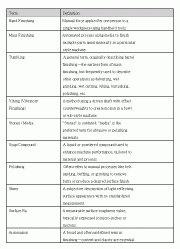
common mass finishing terms:
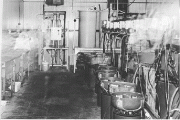
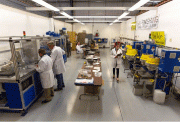
The Old and the New: Introduction of multiple newer finishing technologies to improve results and efficiency
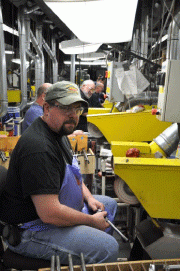
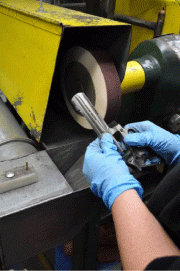
Outdated hand finishing operations, still being used today, are becoming harder to maintain staffing
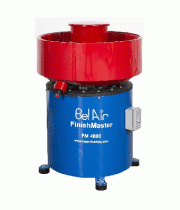
Vibratory Finishing
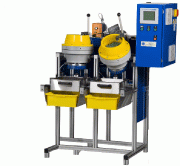
High-Energy Equipment
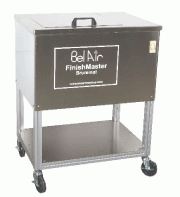
Burnishing Equipment
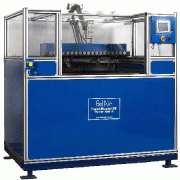
Drag Finishing


Equipment type process flow chart
I. Introduction
This is the first in a series of articles I’ll be contributing to MFN Magazine throughout the year. My approach is to deliver high-impact insights in a short amount of reading time. I welcome your feedback—please reach out to MFN or to me directly with your thoughts. Your input will help shape future articles.
Across both traditional and additive manufacturing, many manufacturers face persistent challenges at the back end of production—especially in finishing and post-processing. Despite rapid advances in machining and 3D printing, the finishing department remains a bottleneck due to outdated processes and a shortage of skilled labor.
Is it time to update your mass finishing operations?
During many visits to manufacturing facilities, I often ask:
- Why are you doing it that way?
- Why are you asking us about the process now?
- May I speak to the Finishing Engineer?
Let’s move beyond this. The following is a toolbox to help inform your decisions and approach.
II. Definitions
Below is a glossary of common mass finishing terms:
III. State of the Finishing Department
A. Continued Reliance on Hand Finishing
Despite advancements in upstream manufacturing, many components from industries such as aerospace, medical, and firearms are still hand-finished—often using files, sandpaper, Dremel tools, and buffing wheels. Investment in modern finishing equipment can reduce labor costs, improve consistency, lower rejection rates, and enhance component performance.
B. Advancements in Finishing Equipment
The term “tumbling” is often misused to describe any mass finishing operation. In reality, it refers specifically to the earliest barrel finishing technology.
- Vibratory Finishing: Utilizes offset counterweights in a bowl or tub to create rotational movement of parts and media. Outside of tumblers, this is the oldest mass finishing equipment; however, advances in configuration and functionality have since been developed.
- High-Energy Equipment: These systems use centrifugal force and programmable motion for faster, more consistent finishing. “Harperizing” is a brand-derived term—much like “Kleenex”—referring to various high-energy centrifugal barrel finishing systems. Within this sector of high-energy equipment, we also include high-energy centrifugal disc finishing systems, each variation offering certain performance or operational benefits over the other.
- Burnishing Equipment: This refers more to a process—and the machines used for it—whose purpose is to use non-abrasive media to impart a smooth or shiny finish without removing material. A specialized machine for this is called a roll burnisher, but the process can also be performed in a tumbler, vibratory finisher, or high-energy system.
- Drag Finishing: Vertical, horizontal, and automated drag machines are used in mass finishing, with the difference being that multiple parts are mounted to fixtures and dragged through a tub of media—either stationary or rotating—for deburring, honing, or polishing.
C. Lack of Training in Finishing Processes
Mechanical engineering curricula often lack education on component functionality and finishing.
Who can design this component in CAD? (All hands raised)
Who can machine it on a CNC? (Half the hands raised)
Who knows the design has 72 areas that prevent functionality post-machining? (None)
We need both academic and industrial onboarding training that addresses finishing considerations during the design phase. A standardized ISO document could help bridge this gap.
IV. Manufacturing Culture
Before reworking an existing process or developing a new finishing methodology, manufacturers must first evaluate their overall production culture. In other words: how are your facilities and workflows actually operating? Is your finishing department designed around legacy methods, or is it integrated into the rest of your production line?
We must also ask: what does your current manufacturing culture dictate for both legacy products and newly introduced components? Modern finishing decisions—whether related to process selection or equipment investment—should be shaped by how and where the finishing operation fits into the broader manufacturing strategy.
The following models, as outlined in the adjacent chart, help identify how finishing culture impacts productivity and decision-making by weighing priorities such as processing time, cost, quality, and training requirements.
When choosing the optimal finishing equipment for your production needs, and after assessing your manufacturing culture, the following chart offers several options to consider for the right application.
A. The “Mall” Model
This refers to the traditional, centralized finishing room—a separate space where parts are routed from all over the facility. Components are typically produced in various departments and sent to the finishing room in batches, where they enter a queue with other products. Equipment selection and process methods are chosen based on output quantity, part type, and scheduling requirements.
B. Cellular Finishing
This model moves the finishing process closer to where components are actually produced. Finishing may be located adjacent to a machining center, a CNC department, a quality control cell, or even shipping. This setup reduces part travel and aligns finishing with the flow of production. Equipment and process choices are made based on immediate production needs, improving communication and efficiency.
C. One-Piece Flow
This approach further refines the cellular model. Finishing is fully integrated within the machining cell and designed to match the takt time of individual components. While this setup promotes fast throughput and lean manufacturing, it also limits the number of viable finishing technologies—only those that can match the production pace are feasible.
D. EHS Regulations
Environmental, health, and safety guidelines now heavily influence how finishing technologies are implemented. Considerations include wastewater disposal, dust control, fire hazards, and worker safety—each of which must be factored into the design and layout of any updated finishing department.
V. Examples
Here are two real-world examples of how manufacturers improved productivity by rethinking their finishing operations.
Example 1: Medical Bone Screw Manufacturer
This company produced batches of 2,000 bone screws per SKU using multiple specialized lathes. Once machined, each batch was routed to a centralized, mall-style finishing room where large vibratory finishers handled deburring. Parts were queued alongside many other batches, with a complex communication system required to prioritize scheduling. After deburring, the parts proceeded to passivation and inspection.
Problem: The entire process took an average of 21 days. If too many screws failed inspection, the entire batch would be rejected—triggering another 21-day cycle to replenish inventory.
Solution: Deburring was moved to a cellular station with a high-energy centrifugal disc finisher. Co-located with the lathes, this system matched the takt time for 200-piece batches and included integrated cleaning and drying.
Results:
- Eliminated the need for separate deburring labor—the CNC machine operators handled the mass finishing.
- Removed the need for complex communication and scheduling.
- Reduced processing time from 21 days to just 4 days.
- Lowered rejection rates by 10× and shortened restock time to 4 days.
Example 2: New Pistol Model – Firearms Manufacturer
Before launching a new product, the production manager—tasked with implementing Lean Manufacturing—anticipated high initial demand. A one-piece flow system was selected for its efficiency and scalability.
This approach established the takt time requirements for finishing processes such as deburring, polishing, blasting, cleaning, and laser etching. Equipment layout was designed prior to production, ensuring synchronization with the machining department.
Results:
- First articles reached the market faster than expected, boosting early adoption and order volume.
- Quality control improved due to centralized finishing and final assembly.
- Machining feedback loops led to better part quality from the outset.
Conclusion
Bring engineering back into your finishing operations.
A modern, well-integrated finishing department doesn’t just make your job easier—it makes your product more competitive.
In the next article, we will explore the nuances of the term automation in the context of mass finishing.
Contributing Editor MFN and
President and Owner of Bel Air Finishing Supply Corporation
E-mail: salviti@belairfinishing.com




























